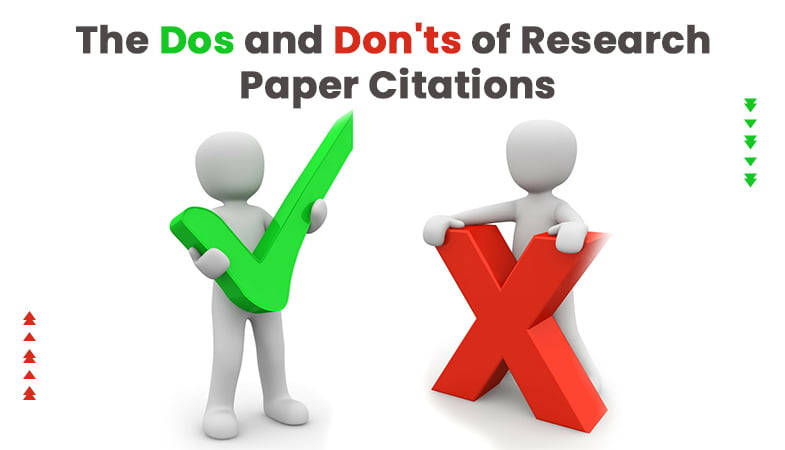
Dos and Don’ts of Research Paper Citations
Dos and Don’ts of Research Paper Citations – When it comes to citing sources in a research paper, there are a few dos and don’ts that should be followed to ensure that your paper is properly cited and that your sources are given the credit they deserve. Mentioned below are some of the Dos and Don’ts of Research Paper Citations.
Do’s
First, let’s talk about the dos of citing sources in a research paper.
- Do understand the citation style required for the paper. Different citation styles have different guidelines and rules for formatting citations, so it is important to know which citation style is required for your paper and to follow those guidelines closely.
- Do include proper citations in the text of the paper. When citing sources in the text of your paper, be sure to include the author’s last name and the page number where the information was found. This allows readers to easily locate the source in the works cited or reference page.
- Do keep track of all sources used in the research process. This includes taking note of the author’s name, the title of the work, the publication information, and the page numbers. This information will be needed when creating the works cited or reference page.
- Do double-check for accuracy and consistency when creating the works cited or reference page.
- Make sure that all sources are listed in the proper format and that all information is accurate.
- Do understand the difference between a direct quote and a paraphrase. When using a direct quote, it is important to include the author’s name and the page number and to use quotation marks. When paraphrasing, it is important to include the author’s name and the page number, but quotation marks are not necessary.
- Do use plagiarism checker tools or software to ensure that you are not accidentally committing plagiarism.
Don’ts
Now, let’s talk about the don’ts of citing sources in a research paper.
- Don’t plagiarize. Plagiarism is a serious academic offense and can result in severe consequences. It is important to understand what constitutes plagiarism and to ensure that all sources are properly cited to avoid plagiarism.
- Don’t use too many direct quotes. While it is important to include direct quotes when necessary, it is also important to use your own words and paraphrase information when possible. Overusing direct quotes can make your paper sound like a collection of other people’s work rather than your own.
- Don’t ignore the importance of in-text citations. In-text citations are just as important as the works cited or reference page. They give readers the information they need to locate the source in the works cited or reference page and also demonstrate that you have done your research.
- Don’t forget to include all necessary information when creating the works cited or reference page. This includes the author’s name, the title of the work, the publication information, and the page numbers.
- Don’t use outdated or unreliable sources. It’s important to use reputable, credible sources in your research paper. Avoid using sources that are outdated or unreliable, as this can make your paper appear less credible.
- Don’t mix different citation styles. Stick to one citation style throughout your paper, as mixing different styles can make your paper appear unprofessional and confusing.
Conclusion
In summary, citing sources in a research paper is an important step in the writing process. The dos include understanding the citation style required for the paper, including proper citations in the text of the paper, keeping track of all sources used in the research process, double-checking for accuracy and consistency on the works cited or reference page, understanding the difference between a direct quote and a paraphrase, and using plagiarism checker tools or software.








